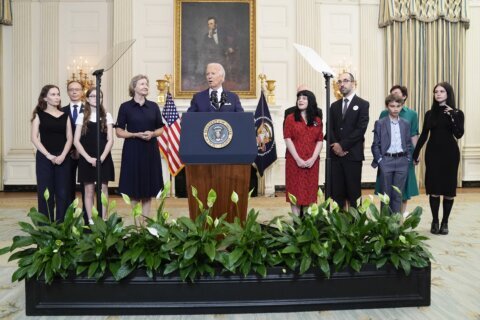President Donald Trump last month signed a $900 billion COVID-19 relief bill, which delivered more aid for small businesses and a $600 check to millions of Americans’ bank accounts. Much of the small-business relief comes through an expansion of the Paycheck Protection Program, or PPP, which was introduced by the whopping $2.2 trillion coronavirus relief bill enacted in the early weeks of the crisis last spring. The program aims to help small businesses continue paying their employees during the pandemic.
To learn more about the PPP provision of this latest aid package, we spoke with Jay DesMarteau, head of commercial distribution at TD Bank, who has been closely monitoring the stimulus bill and PPP provision.
Here are edited excerpts from that interview.
[SUBSCRIBE: Get the weekly U.S. News newsletter for financial advisors. ]
What is the PPP provision of the coronavirus stimulus bill?
The latest aid package — the Economic Aid to Hard-Hit Small Businesses, Nonprofits and Venues Act — makes major changes to PPP. It expands the eligible uses of PPP funds, simplifies the forgiveness process for loans of up to $150,000 and allocates $285 billion for a new round of PPP lending, including “second-draw” loans for certain borrowers.
The act significantly streamlines the forgiveness process for PPP loans of up to $150,000 by requiring only a one-page certification versus a full application with supporting documents, which will benefit about 90% of our PPP borrowers. The act also excludes Economic Injury Disaster Loan, or EIDL, advances from the PPP loan forgiveness calculation and allows PPP borrowers to choose their own covered period, ending at any point between eight and 24 weeks after loan origination.
Additionally, the act confirms that loan forgiveness is not taxable income, and forgivable expenses are tax-deductible.
[READ: Q&A: How Financial Advisors Can Prepare for 2021.]
How does this second round of PPP differ from the first round earlier in 2020?
The changes are designed to help small entities and local establishments access PPP loans, especially some of the sectors hardest hit by COVID-19 such as nonprofits, restaurants and lodging. The act also expands how PPP funds — for both initial and second-round PPP loans — can be used to qualify for forgiveness, although the 60/40 threshold still applies, meaning at least 60% must still be spent on payroll. For the other 40%, eligible costs now include certain operations expenditures, property damage costs, supplier costs and worker protection expenditures.
Businesses in the IRS’s “NAICS 72 code,” which includes hotels and food services, will be able to draw PPP loan amounts at 3.5 times their monthly payroll compared with 2.5 times monthly payroll for all other eligible businesses. This is especially timely as we go into the winter months, and these businesses face even greater operational challenges. Regardless of the type of business, the act caps all second-draw PPP loans at $2 million.
Eligibility is stricter for businesses that apply for a second-draw PPP loan. These borrowers will need to demonstrate they have fewer than 300 employees and have experienced at least a 25% reduction in gross revenue during either the first, second or third quarter of 2020 compared with the same quarter in 2019.
[Read: The Future of the Financial Advice Industry]
Can you tell us about the aid the stimulus bill provides for small businesses?
Along with the changes to PPP, the act provides additional help for small businesses. For borrowers of certain existing Small Business Administration loans, called 7(a) loans, the SBA will make principle and interest payments on the borrower’s behalf, an extension of what was initially provided for in Section 1112 of last spring’s coronavirus relief bill. Extension periods vary. EIDL grant availability has also been extended to Dec. 31. Businesses interested in an EIDL should apply directly with the SBA.
Is there anything else about the stimulus bill and PPP provisions that financial advisors should know?
The act temporarily modifies two of TD Bank customers’ most popular SBA products: 7(a) and Express lines of credit. It’s important for financial advisors to be aware of how these provisions make more SBA funding available to businesses and how these loan types can be beneficial. Changes include a decrease in origination fees on both, making these loans even more attractive products. Express loan amounts also will be temporarily increased from $350,000 to $1 million through Sept. 30. Timing on when these changes go into effect is subject to SBA guidance.
More from U.S. News
10 Largest Financial Advisor Firms in California in 2020
14 Things to Know Before Becoming a Financial Advisor
The Best Podcasts for Financial Advisors
Q&A: What Financial Advisors Should Know About PPP Loans originally appeared on usnews.com







